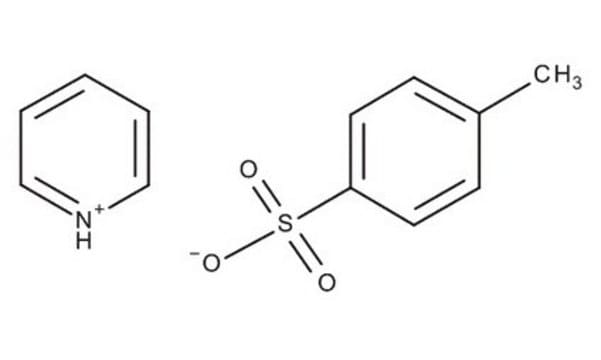936669
DPPF ChemBeads

Synonim(y):
DPPF, 1,1′-Bis(diphenylphosphino)ferrocene ChemBeads, 1,1′-Ferrocenediyl-bis(diphenylphosphine) ChemBeads, 1,1′-Ferrocenediyl-bis(diphenylphosphine), dppf
About This Item
Polecane produkty
Postać
solid
Poziom jakości
skład
loading, 4-6 wt. %
mp
181-182 °C (dec.) (lit.)
ciąg SMILES
[Fe].[CH]1[CH][CH][C]([CH]1)P(c2ccccc2)c3ccccc3.[CH]4[CH][CH][C]([CH]4)P(c5ccccc5)c6ccccc6
InChI
1S/2C17H14P.Fe/c2*1-3-9-15(10-4-1)18(17-13-7-8-14-17)16-11-5-2-6-12-16;/h2*1-14H;
Klucz InChI
HPXNTHKXCYMIJL-UHFFFAOYSA-N
Szukasz podobnych produktów? Odwiedź Przewodnik dotyczący porównywania produktów
Opis ogólny
Zastosowanie
- DPPF has been used as a ligand in:
- The ruthenium catalyzed N-alkylation of amines and sulfonamides using borrowing hydrogen methodology.[1] (19191700)
- The cooperative Cu/Pd catalyzed borylallenylation of trifluoromethyl-1,3-enynes to generate conjugated bisallenes.[2] (36321461)
- The cooperative Cu/Pd catlyzed borocarbonylation of ethylene.[3] (36226440)
- The gold catalyzed synthesis of 2-phosphoryl indolin-3-ones.[4] (35815915)
- The iron-catalyzed vinylzincation of terminal alkynes.[5] (34935372) ChemBeads are chemical coated glass beads. ChemBeads offer improved flowability and chemical uniformity perfect for automated solid dispensing and high-throughput experimentation. The method of creating ChemBeads uses no other chemicals or surfactants allowing the user to accurately dispense sub-milligram amounts of chemical.
- For general uses, product is also available in powdered form (177261)
produkt powiązany
Kod klasy składowania
11 - Combustible Solids
Klasa zagrożenia wodnego (WGK)
WGK 3
Temperatura zapłonu (°F)
Not applicable
Temperatura zapłonu (°C)
Not applicable
Choose from one of the most recent versions:
Certyfikaty analizy (CoA)
Sorry, we don't have COAs for this product available online at this time.
If you need assistance, please contact Obsługa Klienta
Masz już ten produkt?
Dokumenty związane z niedawno zakupionymi produktami zostały zamieszczone w Bibliotece dokumentów.
Nasz zespół naukowców ma doświadczenie we wszystkich obszarach badań, w tym w naukach przyrodniczych, materiałoznawstwie, syntezie chemicznej, chromatografii, analityce i wielu innych dziedzinach.
Skontaktuj się z zespołem ds. pomocy technicznej


![[1,1′-Bis(diphenylphosphino)ferrocene]dichloropalladium(II)](/deepweb/assets/sigmaaldrich/product/structures/130/734/8846aa26-1858-458a-998d-8c306c13bf0f/640/8846aa26-1858-458a-998d-8c306c13bf0f.png)





